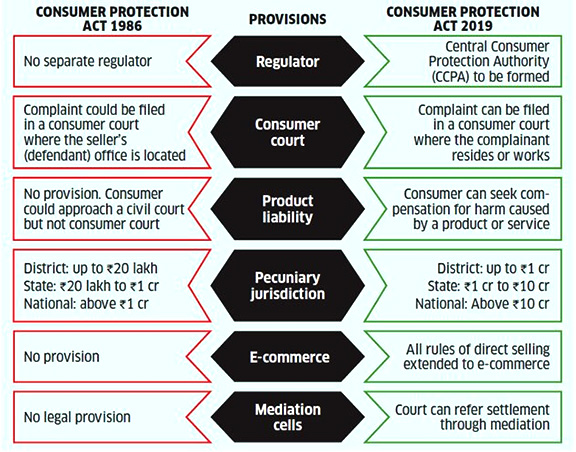Indian Economy
Vacancies in Consumer Disputes Redressal Commissions
- 12 Aug 2021
- 3 min read
Why in News
Recently, the Supreme Court, has expressed displeasure over delay in filling up vacancies in the National Consumer Disputes Redressal Commission and State Consumer Disputes Redressal Commissions.
- It directed the centre and states to complete the process within eight weeks.
Key Points
- About:
- The court was hearing a suo motu case on inaction in appointing president and members/staff of Districts and State Consumer Disputes Redressal Commission and inadequate infrastructure across India.
- It highlighted that vacancies are hurting consumers by delaying redressal of disputes.
- The Court also asked the Centre to submit a report on legislative impact study on Consumer Protection Act, 2019 in four weeks time.
- It's the third time in two weeks that the Supreme Court has voiced its concern regarding vacancies across courts, tribunals and dispute resolution bodies in India.
- About National Consumer Disputes Redressal Commission:
- The National Consumer Disputes Redressal Commission (NCDRC) is a quasi-judicial commission in India which was set up in 1988 under the Consumer Protection Act of 1986.
- Its head office is in New Delhi.
- The commission is headed by a sitting or retired judge of the Supreme Court of India.
- The Consumer Protection Act of 1986 provided for a three-tier consumer dispute redressal machinery at the National (National Consumer Disputes Redressal Commission), State and District levels.
- The Consumer Protection Act, 2019 establishes the Central Consumer Protection Authority (CCPA) whose primary objective will be to promote, protect and enforce the rights of consumers.
- About Legislative Impact Study:
- Legislative Impact Study or Assessment is the study of the impact of a law (being made and enforced) on the society over a period of time.
- It is a method of estimating the likely impacts of legislative proposals and government policies, before and after they are adopted and enacted.
- For example, what impact would it have on the litigation, what is the kind of manpower required, what is the infrastructure required.
- It compares them with different policy designs to determine which policy produces the best result.
- The responsibility of Parliament after a law is made is not over. It has to confirm whether the intended objectives and needs of the law are achieved or not.







